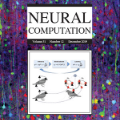Artificial neural networks (ANNs) have permeated various disciplinary domains, ranging from bioinformatics to financial analytics, where their application has become an indispensable facet of contemporary scientific research endeavors. However, the inherent limitations of traditional neural networks arise due to their relatively fixed network structures and activation functions. 1, The type of activation function is single and relatively fixed, which leads to poor "unit representation ability" of the network, and it is often used to solve simple problems with very complex networks; 2, the network structure is not adaptive, it is easy to cause network structure redundant or insufficient. To address the aforementioned issues, this study proposes a novel neural network called X-Net. By utilizing our designed Alternating Backpropagation mechanism, X-Net dynamically selects appropriate activation functions based on derivative information during training to enhance the network's representation capability for specific tasks. Simultaneously, it accurately adjusts the network structure at the neuron level to accommodate tasks of varying complexities and reduce computational costs. Through a series of experiments, we demonstrate the dual advantages of X-Net in terms of reducing model size and improving representation power. Specifically, in terms of the number of parameters, X-Net is only 3$\%$ of baselines on average, and only 1.4$\%$ under some tasks. In terms of representation ability, X-Net can achieve an average $R^2$=0.985 on the fitting task by only optimizing the activation function without introducing any parameters. Finally, we also tested the ability of X-Net to help scientific discovery on data from multiple disciplines such as society, energy, environment, and aerospace, and achieved concise and good results.
翻译:暂无翻译





